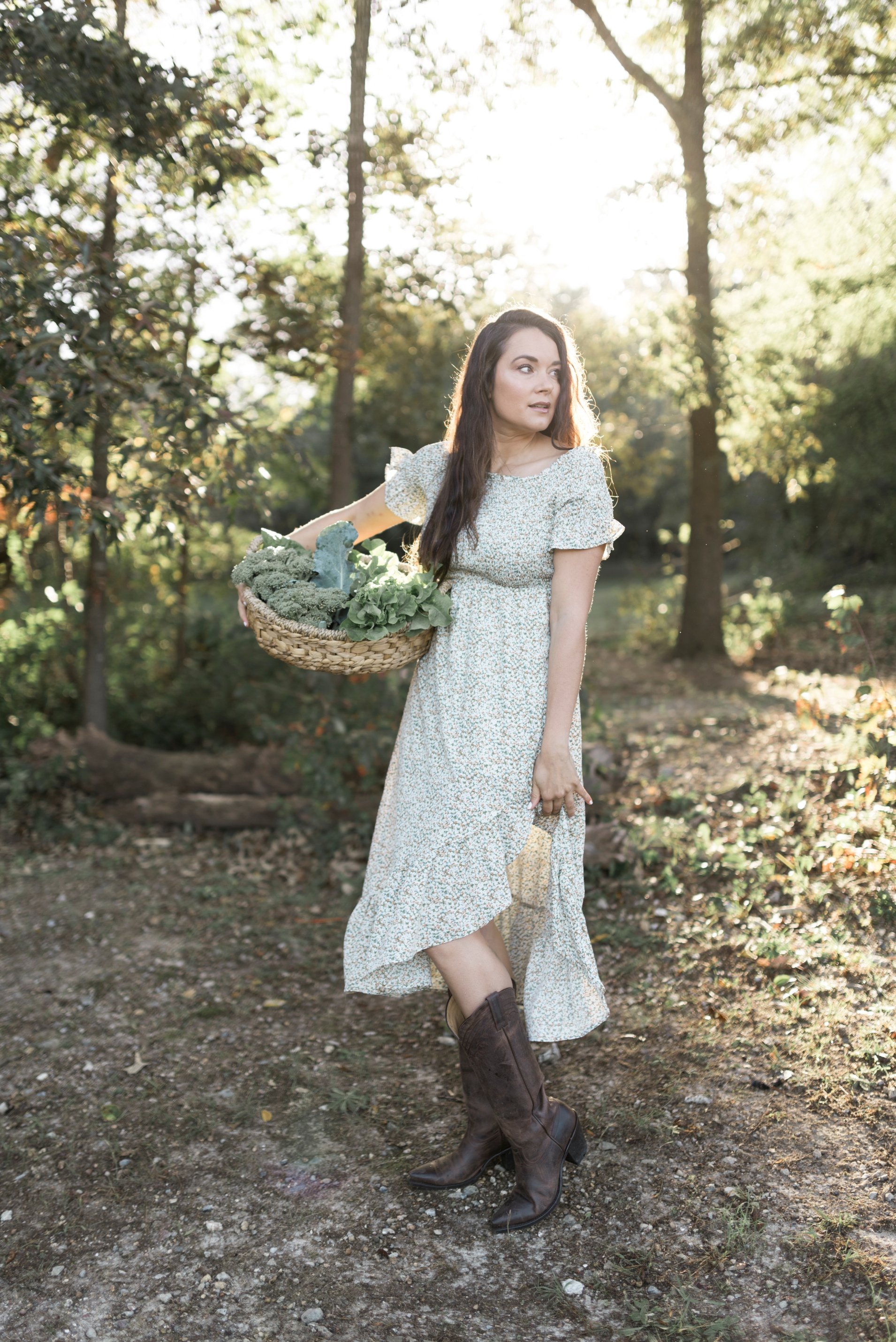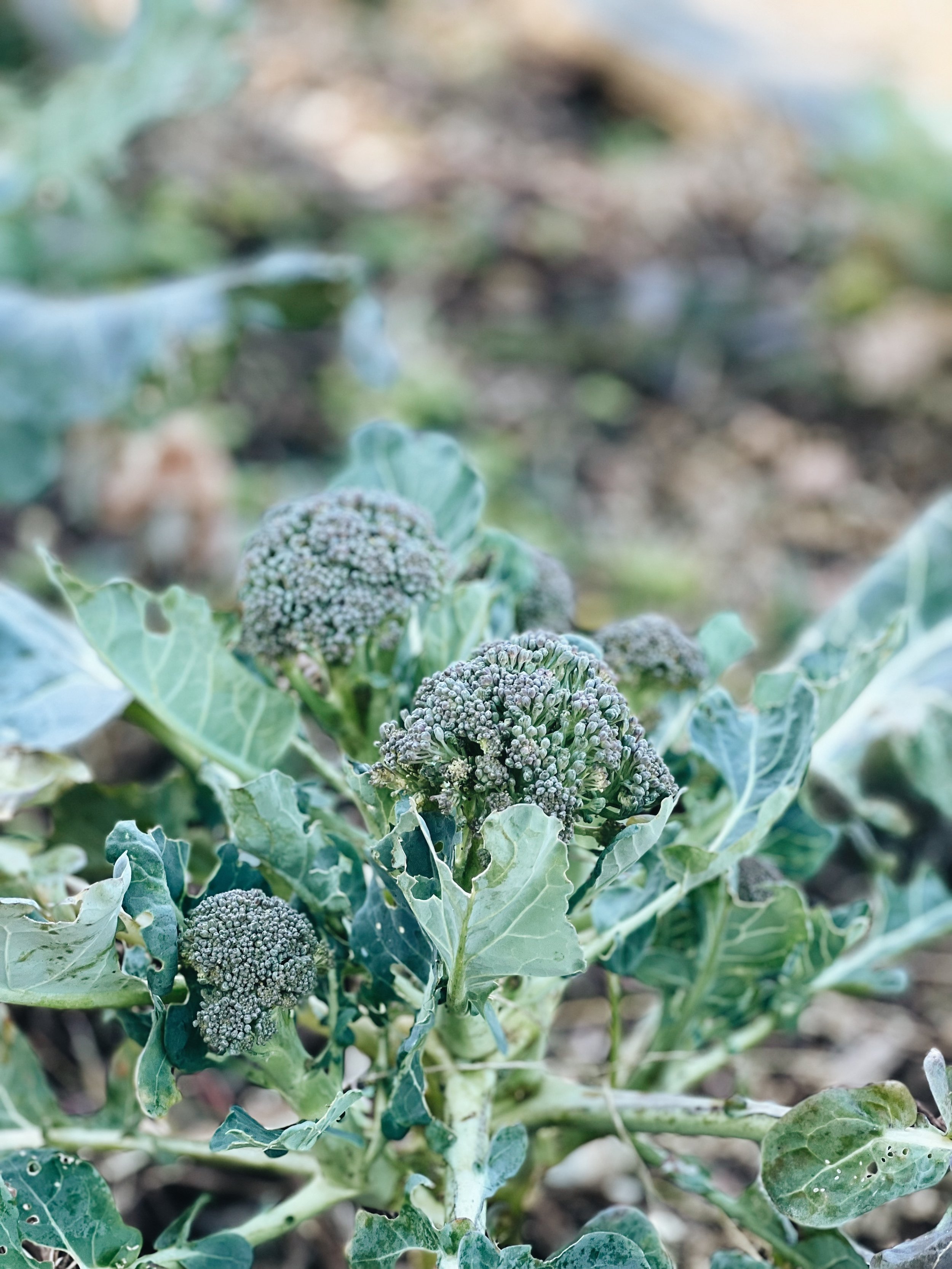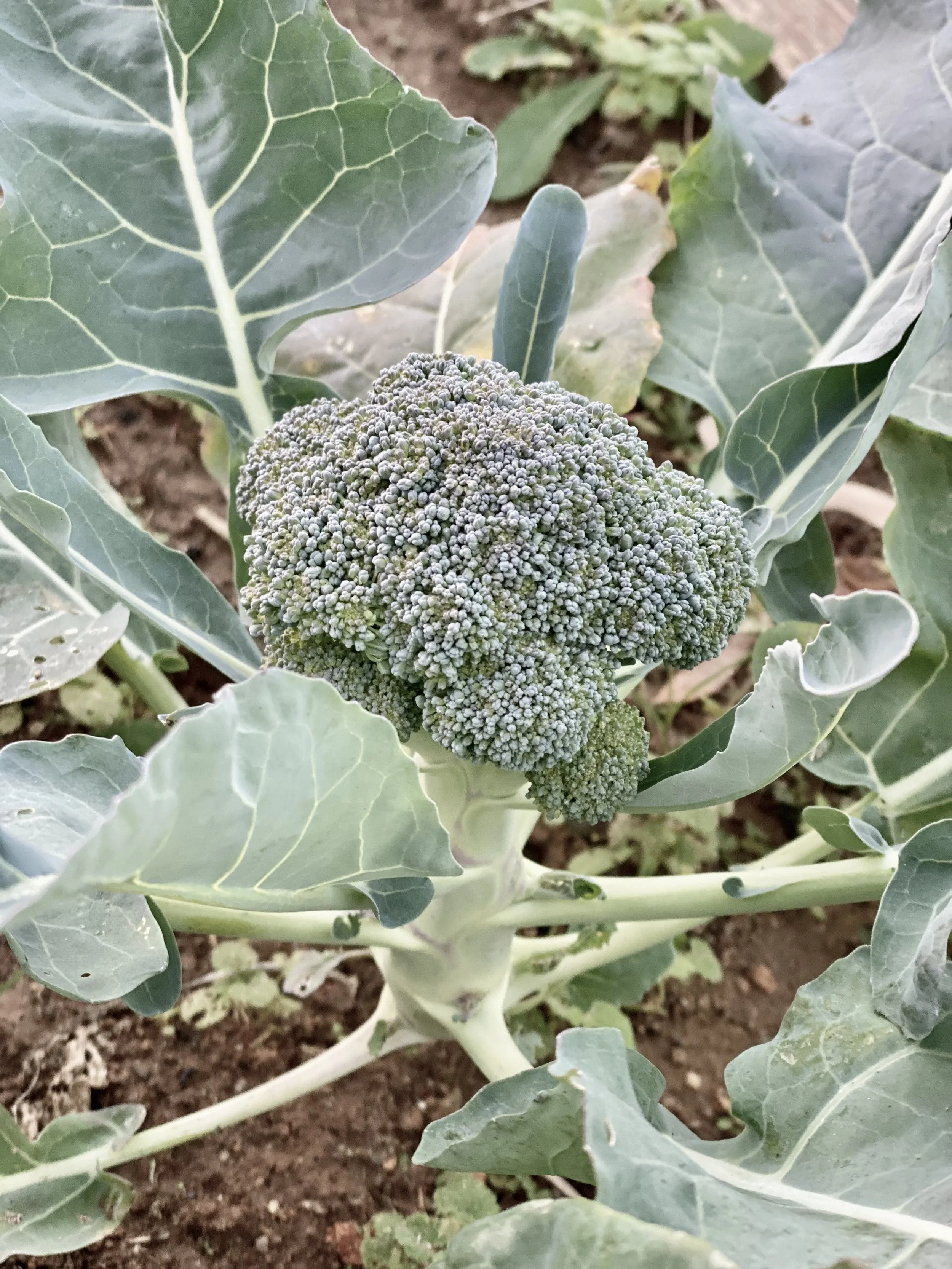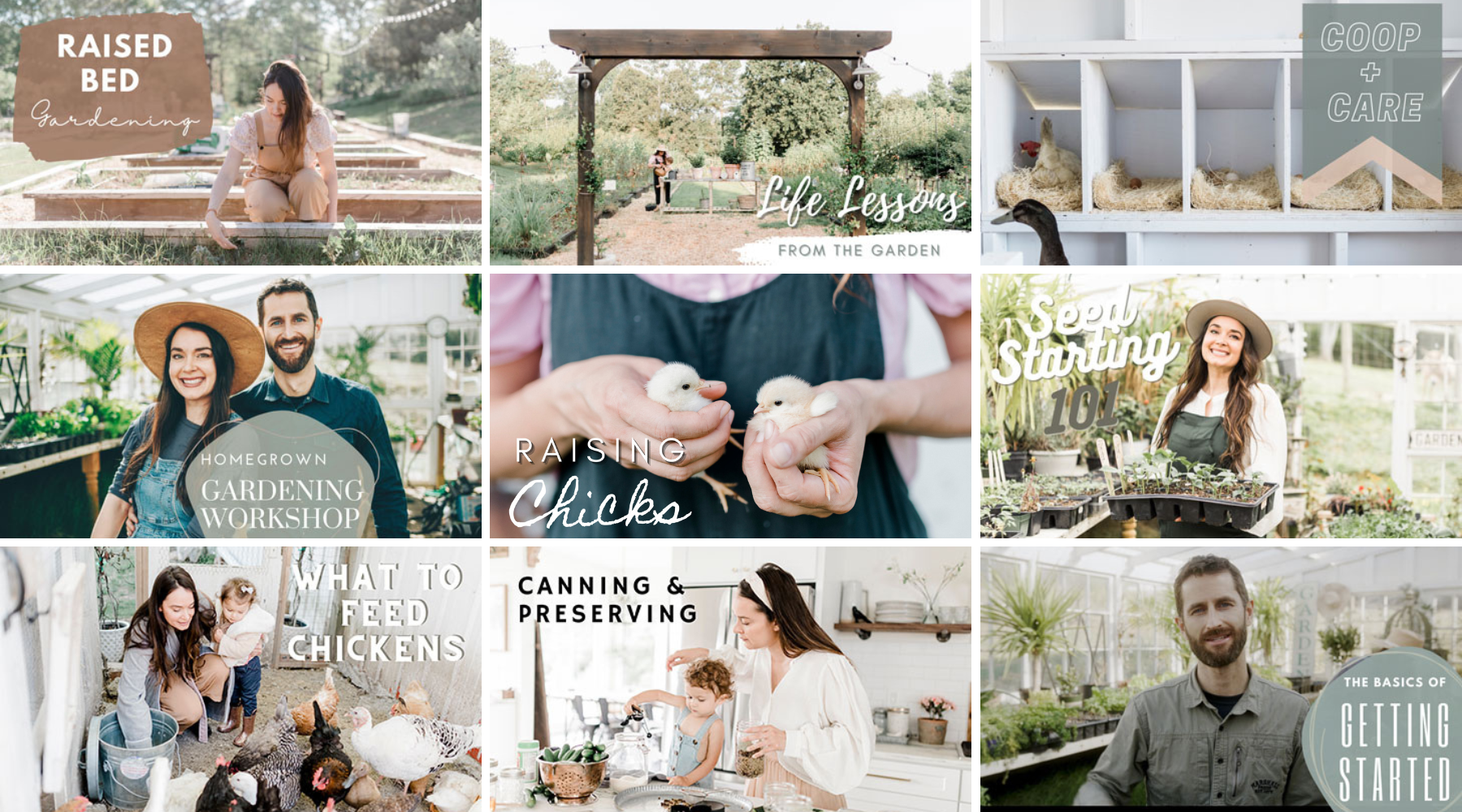A Beginner's Guide to Growing a Successful Broccoli Harvest
It's fall crop season, friend! And that means delicious cool-season-loving crops like broccoli, cabbage, cauliflower, carrots, beets, kale, and more!
One of my favorites is broccoli. It is a nutritious addition to your dinner plate and a rewarding addition to the garden!
Known for its health benefits and versatility in cooking, broccoli is a cruciferous vegetable that thrives when grown in the right conditions.
If you're a beginner or an experienced gardener looking to improve your broccoli harvest, this guide is for you. I'll share everything from when and where to plant broccoli to tips on care and harvesting.
Contents:
But First, Is Broccoli Easy to Grow?
Absolutely! Broccoli is considered moderately easy to grow, making it an excellent choice if you are a novice or experienced gardener! With a bit of attention to detail and the right conditions, you can enjoy a bountiful broccoli harvest without much fuss and effort.
When to Plant Broccoli
When to plant broccoli largely depends on your area's climate and specific growing season. In general, broccoli prefers cooler soil temperatures between 45°F and 75°F, so you'll want to aim for a planting date in the early spring for a summer harvest or late summer for a fall harvest.
You’ll want to grow broccoli so that when it is time to harvest, the temperatures average no more than 75°F each day.
For spring planting, aim to plant late February to early April in most regions. In the fall, consider planting in late July or early August. And for a winter crop in Zones 8 and warmer, sow in late summer to early fall.
Here is a general guideline on when to plant broccoli:
For a Spring Harvest:
Indoors: Start by sowing broccoli seeds indoors 6-8 weeks before your last expected frost date. This typically falls in late winter or early spring (late February to early April in most regions).
Transplanting: Transplant the broccoli seedlings into your garden when they have a couple of true leaves and are about 4-6 weeks old. This often occurs in late winter or early spring.
Harvest: You can expect to harvest broccoli heads approximately 85 to 100 days after planting the seeds, typically in late spring or early summer.
For a Fall Harvest:
Indoors: Start broccoli seeds indoors 6-8 weeks before your first expected fall frost date. Planting is usually done in late summer (late July to early August).
Transplanting: Transplant the seedlings into your garden when they are about 4-6 weeks old, which is typically in late summer or early fall (early August and into September for warmer regions).
Harvest: Broccoli heads should be ready for harvest approximately 85 to 100 days after planting the seeds, often in late fall or early winter.
It's essential to check your local climate and frost dates to determine the best planting times for your specific region. You can find your area's average frost dates from local agricultural extension offices, gardening websites, or gardening apps.
Adjust your planting schedule to ensure that your broccoli plants grow in the proper temperature range for the best results.
Additionally, some broccoli varieties may have slightly different maturity times, so check the seed packet or supplier's information for specific guidance on when to plant your chosen variety.
READ MORE: Tips for planning a fall garden
How long does broccoli take to mature?
On average, broccoli typically takes between 85 to 100 days to mature from the time you plant the seeds in your garden.
However, the time it takes for broccoli to mature from planting to harvest can vary depending on several factors, including its variety, growing conditions, and climate.
It's important to note that even after you harvest the central head, many broccoli varieties will continue to produce smaller side shoots that you can harvest later, extending your harvest period. These side shoots are often as tender and tasty as the main head.
To get a more accurate estimate of when your specific broccoli variety will be ready for harvest, it's a good idea to check the seed packet or the information provided by the seed supplier, as they may provide specific details on the days to maturity for that particular variety.
Where to Plant Broccoli
Choose a location in your garden that receives full sun, ideally 6-8 hours of direct sunlight daily. Broccoli thrives in well-draining soil with good air circulation to prevent disease.
Does Broccoli Like Sun or Shade?
Broccoli definitely prefers the sun over shade. Adequate sunlight is essential for healthy growth and the development of those delicious heads. If your garden doesn't receive enough sun, consider planting broccoli in a container that you can move to catch the sun's rays.
Soil Requirements for Growing broccoli
Broccoli prefers slightly acidic to neutral soil with a pH between 6.0 and 7.0. Ensure your soil is rich in organic matter by amending it with compost or well-rotted manure. Well-draining soil is crucial to prevent soggy roots, which can lead to rot.
READ MORE: How to make the best organic garden soil for vegetables
Steps For Growing Broccoli Sprouts
Start by sowing broccoli seeds indoors about 6-8 weeks before your intended transplant date.
Plant the seeds in a seed-starting mix, keeping them moist and warm (around 70°F).
Find a small tray with good drainage that can be used to plant your seeds.
Fill the trays with soil, but don't pack the soil too tightly; leave it pretty loose. The water will eventually compact it. Water it so it's moist before you put the seeds in.
Poke holes into each cell.
Plant the broccoli seeds (2-3 seeds per hole) about 5mm deep or as indicated on the packet.
Lightly sprinkle water over the seeds and soil, ensuring the soil is not compacted.
Cover the tray with a thick layer of plastic to keep the plants warm and move it to a warm location (65-75 degrees) with good circulation and where it gets good indirect light. You could also place grow lights over them.
Check it and water daily as needed.
They should germinate and sprout within 3-7 days.
When you see sprouts coming through, remove the plastic covering and give them more light.
Thin out the little leaves so there is only one main seedling.
Once they have a couple of true leaves, you can transplant them into your garden. Space the plants about 12-18 inches apart in a row, with the rows 2-3 feet apart to allow for proper growth.
READ MORE: Seed starting basics
HOMEGROWN
Learn more about seed-starting basics, how to make nutrient-rich soil, and so much more on our HOMEGROWN community platform!
You’ll get all the gardening tips you need so you can have your most successful and bountiful harvest yet!
Can You Directly Sow Broccoli Seeds?
Broccoli does better when started indoors. However, you can also directly sow broccoli seeds if you didn't get the chance to start them indoors and if you still have enough time for the seedlings to grow and settle before your first frost.
The most important thing is to ensure you sow them two weeks before your last frost date for a summer harvest or 8 weeks before your first expected fall frost.
But do note that they are easily stressed in hot weather, especially when seedlings are newly germinated and shallow-rooted. When direct sowing broccoli, the chances for successful germination and sprouting decrease.
Sow two seeds in holes 1/4 to 1/2 inch deep and 12-18 inches apart in the rows. Once you see sprouts, thin each planting area so it only has one seedling.
It's not required to soak broccoli seeds. But soaking broccoli seeds in warm water for 12-24 hours will give them a good head start, especially when direct sowing, and can even speed up germination.
READ MORE: Direct sowing vs. starting seedlings
Does Broccoli Need Fertilizer?
Yes, broccoli benefits from regular feeding. Fertilize your broccoli plants with a balanced, slow-release fertilizer or organic compost at planting time. You can also side-dress the plants with a nitrogen-rich fertilizer a few weeks after transplanting.
READ MORE: How to use compost in the garden
How Often Do You Water Broccoli?
Keep the soil consistently moist but not soggy. Broccoli plants prefer regular, deep watering. Aim for about 1 to 1.5 inches of water per week. Mulching around the plants can help retain moisture and regulate soil temperature.
When to Harvest Broccoli
Harvesting broccoli at the right time ensures the best flavor and texture. It's time to harvest when the central head is tight, dark green, and about 6-8 inches in diameter.
You'll also want to harvest your broccoli before it produces flowers or turns yellow, or its flavor will become bitter and less pleasant to eat.
Use a sharp knife to cut the head just below the central stem.
Be sure to leave the plant in place because smaller broccoli heads, known as side shoots, will appear after 4-6 weeks to be enjoyed again!
Harvest broccoli early in the morning for the best-tasting crop before the soil warms up.
SMALL BROCCOLI HEADS 6 WEEKS AFTER CUTTING THE MAIN HEAD!
Growing broccoli in containers
Growing broccoli in containers is an excellent option for those with limited garden space or who want more control over the growing conditions.
Here's how to grow broccoli in containers
Choose the Right Container:
1. Container Size: Select a container at least 12-18 inches deep and wide. Broccoli has a relatively deep root system, so a deeper container will provide ample space for root growth.
2. Drainage: Ensure your container has proper drainage holes to prevent waterlogged soil, which can lead to root rot.
Select the Right Soil:
1. Potting Mix: Use a high-quality potting mix specifically formulated for container gardening. This mix will provide good drainage and aeration for your broccoli plants.
Planting Broccoli in Containers:
1. Growing & Transplanting Seedlings: Start by growing broccoli seedlings indoors or purchase young transplants from a nursery or garden center. Once the seedlings have grown a couple of true leaves and are about 4-6 weeks old, they can be transplanted into your containers.
2. Spacing: Space the broccoli plants in the container, leaving about 18-24 inches of space between each plant. This spacing allows for proper growth and air circulation.
Caring for Broccoli in Containers:
1. Sunlight: Place the containers in a location that receives at least 6-8 hours of direct sunlight daily.
2. Watering: Keep the soil consistently moist, but not waterlogged. Containers can dry out faster than garden soil, so check the soil regularly and water as needed. Deep watering is preferable to shallow watering.
3. Fertilization: Broccoli grown in containers may require more frequent fertilization because nutrients can be leached out of the soil faster. Use a balanced, slow-release fertilizer or organic compost at planting time, and consider providing additional nutrients as the plants grow.
4. Support: Depending on the variety and size of your broccoli heads, you may need to provide support for the plants to prevent them from toppling over as they mature.
Harvesting:
Follow the same guidelines for harvesting broccoli in containers as you would for garden-grown broccoli. Harvest the central head when it reaches 6-8 inches in diameter and is tight and dark green.
Leave the plant in place, and it may produce smaller side shoots that can be harvested later!
What Grows Well With Broccoli
Companion planting can help protect your broccoli from pests and improve its growth and health.
What to plant with broccoli
Beets: Beets add magnesium to the soil
Nasturtium and geraniums: These repel all insects that harm brassicas
Lettuce: Their delicateness will benefit from broccoli's shade
Onions: Onions give broccoli a better flavor
Radishes: They will enjoy the shade of broccoli
Rosemary & Basil: The scent will deter flies from laying eggs in the broccoli crowns.
What Not to Plant with Broccoli
Beans: Beans release a lot of nitrogen, which can overwhelm broccoli.
Brassicas: Other brassicas like cabbage and cauliflower will compete for many of the same nutrients and can also attract the pests that wreak havoc on the plants.
Nightshades: Plants like tomatoes, cucumbers, and peppers can stunt broccoli's growth.
READ MORE: Companion planting with herbs and flowers for organic pest control
There you have it friend! Growing a successful broccoli harvest can be a satisfying experience for gardeners of all skill levels.
By paying attention to factors like planting time, sunlight, soil quality, and proper care, you can enjoy a plentiful supply of this nutritious and delicious vegetable.
Whether you're a beginner or a seasoned gardener, following these guidelines will help you cultivate healthy, vibrant broccoli plants that will thrive in your garden and on your dinner table. Happy gardening!
Love, Annette xx
homegrown COMMUNITY
Want to learn more about how to grow veggies successfully?
Are you longing to return to the basics and experience the healing powers of soil under your nails?
Do you crave a lifestyle where your time is spent among the kindness of animals?
Then our HOMEGROWN COMMUNITY might be for you!
There’s nothing like the excitement of learning a new thing - how to garden, how to make delicious recipes from your garden, or how to care for baby chicks.
But the truth is that without understanding the basics, these fun experiences can become a headache. Bugs eat your tomatoes before you do. Recipes don’t taste like you hoped. Those chicks get sick or worse, don’t make it.
We have been creating and curating content from people just like you who have already lived and learned, and we are excited to share with you the steps we took to find success so you don’t have to repeat the same mistakes we have made.
From food to farm to family and so much more, we find ways to share tried and tested ideas in your own kitchen, garden, farm, and home.
A growing library of over 100 videos
Watch and enjoy on any device
Connect with a community of lifelong learners
Access to on-demand workshops and step-by-step tutorials
Fun Instruction for Rookies or Rockstars
Curated courses & world-class instruction
Affordable subscriptions with no surprise extra costs
Special subscriber offers & personal support for your country living questions
HomeGrown is here not just to teach you what to do but how to do it, too. Oh…and we have some fun along the way.
For a small fee of $5.99/month or $49 for the year, you have years of experience, trial and error, and knowledge right at your fingertips.













